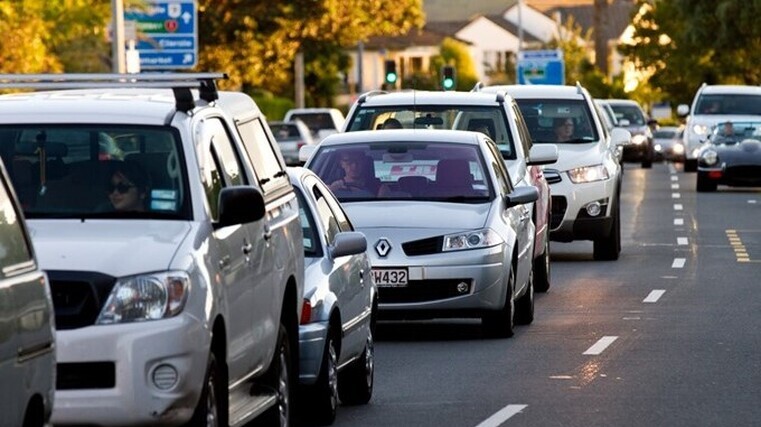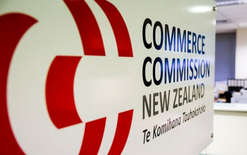‘Fund EVs with congestion fees’

The Motor Trade Association (MTA) is calling on the government to consider using money raised from time-of-use charging schemes to help incentivise the uptake of low and zero-emissions vehicles.
The suggestion forms part of a submission it sent to officials this week in response to the government policy statement (GPS) on land transport 2024.
Simeon Brown, Minister of Transport, released the draft GPS last month and it outlines the coalition’s plans for investing in land transport over the next decade.
It also details a number of proposed reforms, including moving all road vehicles from fuel excise duty to road-user charges (RUC) and amending tolling legislation to allow for time-of-use charging on New Zealand’s most congested roads.
The MTA says in its submission that, overall, it is optimistic about the proposed changes and looks forward to seeing their implementation and impact on road safety and infrastructure.
It also makes a number of recommendations to the government, such as considering wider transport options when time-of-use charging is rolled out in locations around the country.
“With new fees to deal with congestion and funding, people do need efficient and reliable options available, should they choose to limit or change their driving behaviour,” the MTA explains.
“Under the assumption that funds raised through regional time-of-use charging schemes will be for councils to utilise for local transport projects, we would encourage the government to enable councils to have some flexibility.
“For example, being able to provide local incentives for the purchase of low and/or zero-emission vehicles.
“This could be an opportunity for councils who wish to better meet climate goals by continuing the momentum of uptake for such vehicles, with a vastly different funding model to the clean car discount – the ute tax – which MTA successfully campaigned against.”
Inspections plea
On the topic of road safety, the MTA repeats its call for a change to the frequency of warrant of fitness (WOF) inspections for vehicles aged more than 15 years from the current 12 months to six months.
It notes that under the present regime, vehicles up to 24 years old are required to undergo this “essential safety check” just once a year, because the cut-off for six-month warrants is set at a fixed date of manufacture – January 1, 2000.
“This means that vehicles continue to get older, but at no point switch to six-month warrants,” it adds.
“This has created an ever-increasing window for having potentially unsafe vehicles on our roads.”
The MTA explains more than half of vehicles over 15 years old fail their warrant on first inspection and if the regulation remains as it is then cars in this category will continue to get older and the problem will become worse.
To address this, it suggests transitioning to a fixed vehicle age of 15 years in place of the year of manufacture for annual WOF inspections.
“Additionally, the issue of newer versus older cars being given the same testing regime, despite in many cases significant technological differences, remains a complex issue.
“MTA questions whether the vehicle inspection requirements manual is fit for purpose. At some stage, a conversation around what initiatives could be undertaken to renew New Zealand’s ageing fleet should happen.”
The association also urges the government to undertake a cost-benefit analysis of an allowance or co-funding model for vehicle inspection for those receiving support from Work and Income.
“MTA sees an opportunity to review vehicle safety regulations, and with our member base playing a significant role in vehicle testing, we wish to lead the conversation around ensuring the warrant of fitness regime is fit for purpose.”
Funding changes
The government’s move towards universal RUC is commended by the MTA as a more equitable tool to charge for road use, “which will confront the reality of increasing fuel efficiency resulting in less revenue from road tax on a per kilometre basis”.
“However, without a clear timeline for implementing mechanisms such as universal RUC or time-of-use charging, it is difficult to provide a fulsome comment on the long-term use of these sources of revenue,” it says.
The MTA also backs the implementation of an electronic RUC system either before or as part of the launch of universal charges.
It continues that it is economically sound for the government to look at alternative funding mechanisms for land transport, particularly beyond straight taxation, and the submission also voices support for Brown’s expectations of the NZ Transport Agency.
“The government and NZTA need to align their strategies quickly, and we acknowledge that this GPS serves as a signal that the agency must pivot to enhance confidence.
“The delivery of the new roads of national significance will require a broader range of funding options, financing models, and alternative delivery models including public-private partnerships.
“NZTA needs to focus on the basics and fund transport projects for transport outcomes first and foremost. We cannot be anchored in past delivery models and should embrace learnings from projects such as Transmission Gully and Pūhoi to Warkworth.”
In conclusion, the MTA’s submission says it supports innovative solutions that fund and develop the transport infrastructure projects needed in New Zealand.
Action plan
Consultation on the draft GPS, which replaces one the previous government sought feedback on in August 2023, closed on April 2.
The Ministry of Transport says it will use the submissions it has received to provide advice to Brown on the final policy statement for 2024.
Finalising the GPS is one of 36 priorities the government aims to achieve by June 30 and is listed in a three-month action plan that was released by Prime Minister Christopher Luxon on April 2.





